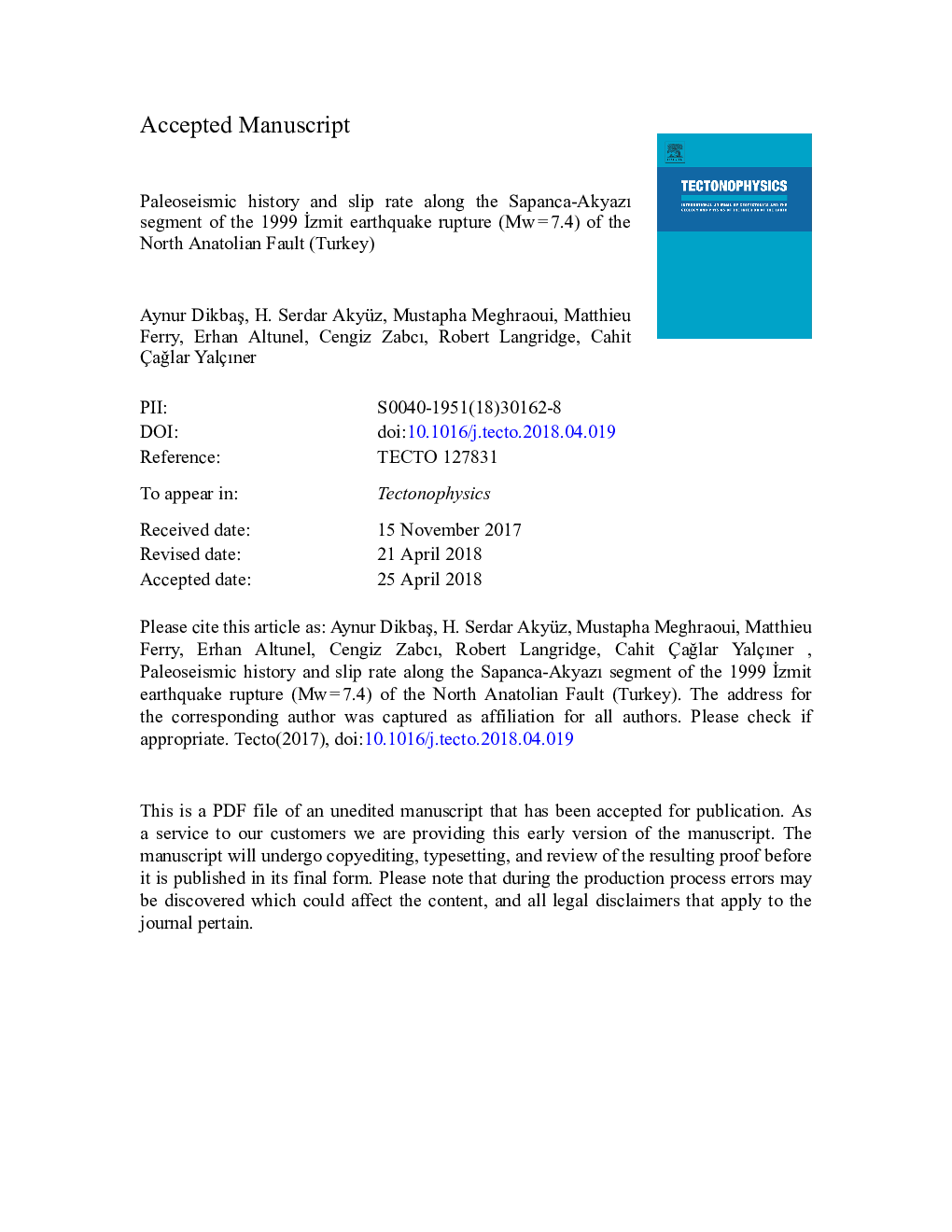| Article ID | Journal | Published Year | Pages | File Type |
|---|---|---|---|---|
| 8908656 | Tectonophysics | 2018 | 68 Pages |
Abstract
The Sapanca-Akyazı segment (SAS) is located on western part of the North Anatolian Fault (NAF) of Turkey. It was ruptured together with four other segments during the 17th August 1999 Ä°zmit earthquake (Mwâ¯=â¯7.4) which caused ~145-km-long surface rupture in the east Marmara region. We conducted geomorphological investigations and 2D-3D paleoseismic trenching at 3 different sites near the Sakarya River along the SAS to obtain new data for the timing of past earthquakes and slip rate of this section of the NAF. Detailed investigations using Ground Penetrating Radar on the western bank of the Sakarya River reveal 18.5â¯Â±â¯0.5â¯m of right-lateral cumulative offset of an alluvial terrace dated as 850â¯Â±â¯11â¯years BP using Optically Stimulated Luminescence. The analysis of trench data from the three different sites of the SAS indicates the occurrence of four surface rupturing past earthquakes including the 1999 Ä°zmit earthquake. According to the radiocarbon dating, these paleo-earthquakes can be correlated with the 1719â¯CE, 1567â¯CE, and 1037â¯CE historical earthquakes and suggest an average recurrence period between 273 and 322â¯years. The total dextral offset, the age of trench units and the terrace deposits together suggest a 22â¯Â±â¯3â¯mm/yr slip rate for this portion of the NAF.
Related Topics
Physical Sciences and Engineering
Earth and Planetary Sciences
Earth-Surface Processes
Authors
Aynur DikbaÅ, H. Serdar Akyüz, Mustapha Meghraoui, Matthieu Ferry, Erhan Altunel, Cengiz Zabcı, Robert Langridge, Cahit ÃaÄlar Yalçıner,
